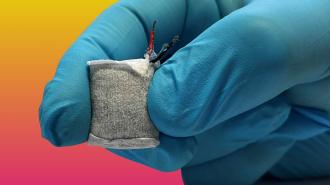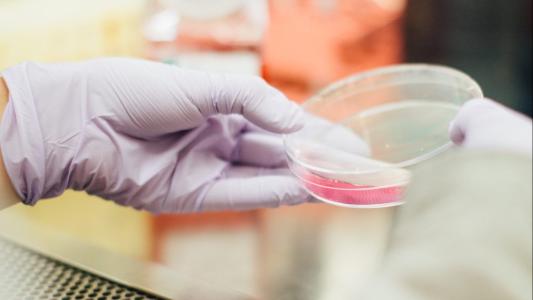Swiss researchers have developed a sugar-powered implant that automatically produces insulin when blood glucose levels are high — potentially giving people with diabetes an easier, less-painful way to manage their condition.
Diabetes management: For people with type 1 diabetes (T1D), the body doesn’t produce enough (or any) insulin, a hormone that converts blood sugar into energy. To prevent their blood glucose levels from being dangerously high, they need regular injections of synthetic insulin.
People who manage their diabetes manually must give themselves these painful injections multiple times a day. Those who use insulin pumps only have to deal with jabs when they change the catheter every 2 or 3 days, but they have to get used to having the pump on their person at all times.
In either scenario, people with T1D must check their blood sugar levels regularly, with finger pricks and/or a continuous glucose monitor — another device attached to the outside of their body.
When an electric current is applied to the cells, they produce and secrete insulin.
Sugar-powered implant: Researchers at ETH Zurich have now developed a fully implantable two-part diabetes management system, which automatically releases insulin when blood sugar levels are high and then stops releasing it when they return to normal.
The first part is a fuel cell, coated in alginate, an algae-based product approved for medical use. When implanted under the skin, the alginate soaks up fluids and allows glucose to enter the heart of the fuel cell, where copper-based nanoparticles split it into gluconic acid and a proton.
The proton triggers an electric circuit, powering the second part of the system: a capsule filled with artificial beta cells. The ETH Zurich team developed these cells in 2016, and when an electric current is applied to them, they produce and secrete insulin.
The testing: The system is designed so that the fuel cell only produces the electric current when blood glucose exceeds a certain level. Once the release of insulin brings blood sugar down enough, it stops producing the current.
When the researchers tested the sugar-powered implant in mice with T1D, it worked as hoped, triggering the production of insulin as needed to keep blood glucose levels steady.
The researchers say the system can also produce enough electrical energy to communicate with a smartphone or other external device — this could give users and their doctors a way to monitor it using an app.

Looking ahead: The ETH Zurich team isn’t the first to develop a glucose-powered fuel cell — researchers have been exploring their use to power medical implants for decades — but it is the first to pair one with an implantable system that automatically generates insulin.
While their prototype showed promise in mouse tests, it’s still only a prototype, and it’s not clear how long a version designed for people would operate in a human body or how invasive the implantation and removal processes would be.
The researchers are now looking for partners to help them develop a version of the sugar-powered implant that could be approved for use in people with T1D — giving them a way to manage their diabetes that doesn’t involve constant monitoring and regular injections.
We’d love to hear from you! If you have a comment about this article or if you have a tip for a future Freethink story, please email us at [email protected].






